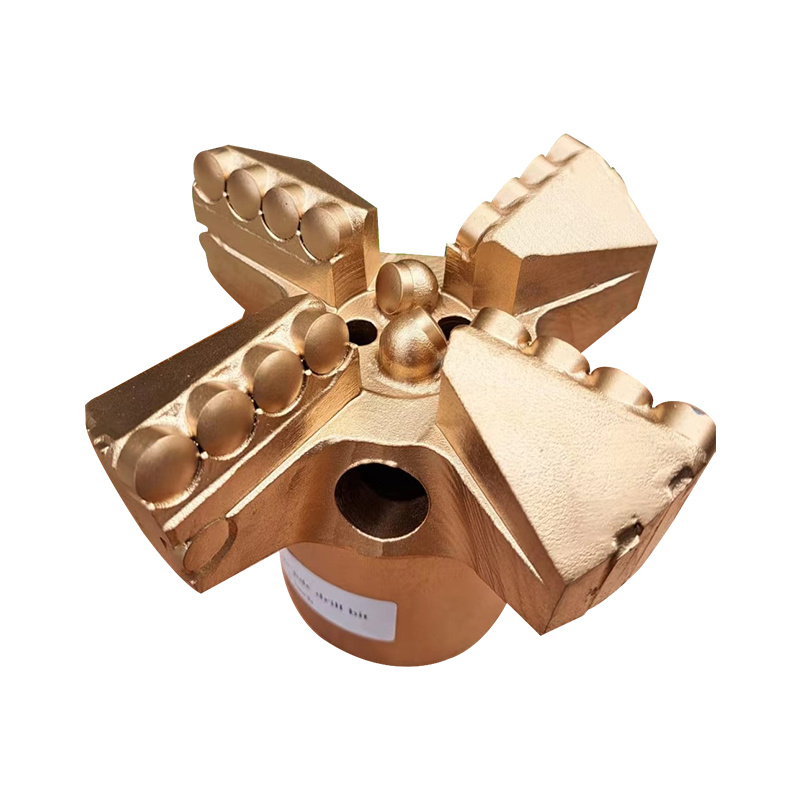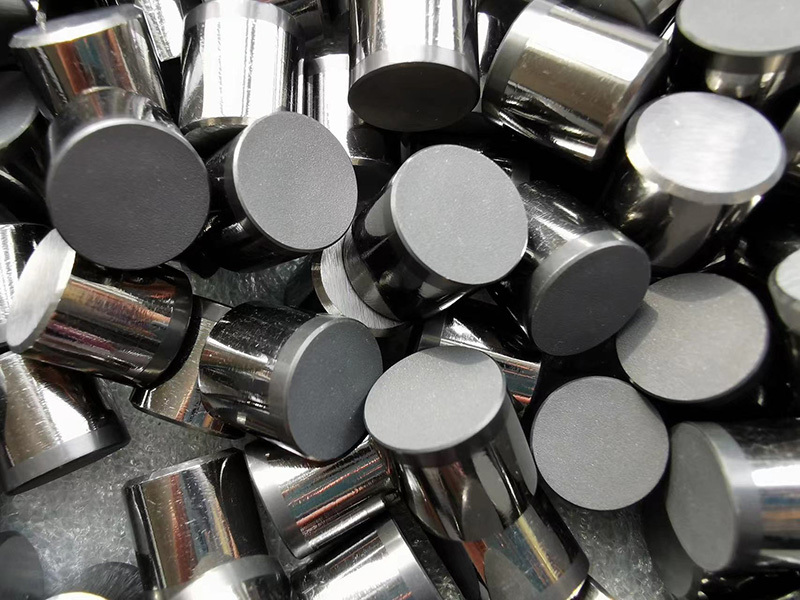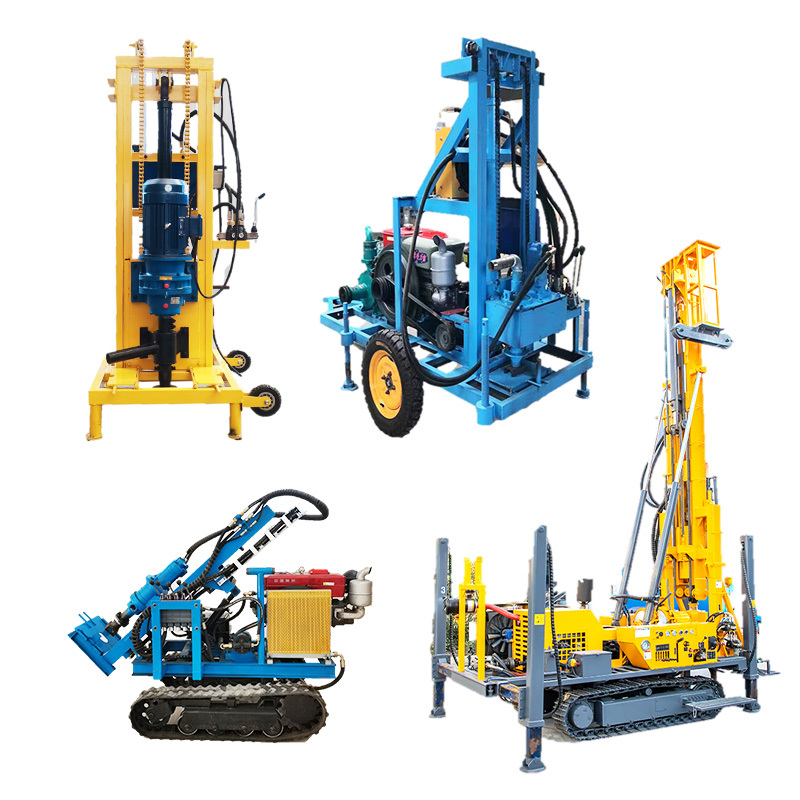How Many PDC Blades Are Best for Your Drill Bit?
May 31,2025
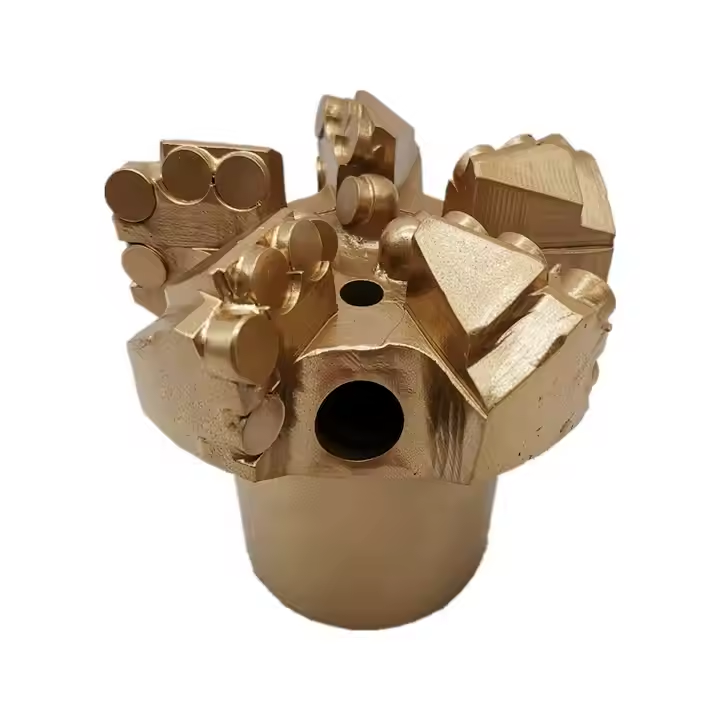
Info Snippet/Abstract:Info Snippet/Abstract:
- PDC bit blade count is crucial: Fewer blades (3-4) = faster drilling but less stability. More blades (6-8) = better stability & longevity but slower in soft rock.
- Matching blade count to formation type (soft, hard, interbedded, abrasive) prevents costly inefficiency.
- SUNGOOD TECH's Dual-Track Cutting System combines deep cutting with enhanced stability, boosting ROP and reducing vibration.
- Case study data included. Discuss optimal blade strategies for challenging formations.
How Many PDC Blades Are Best for Your Drill Bit?
Choosing between two identically sized PDC drill bits – one with 3 sleek blades like a trident, the other with 7 robust blades like a studded mace – isn't just aesthetic. It's a critical decision impacting drilling speed, tool life, and ultimately, your well cost. The number of blades fundamentally dictates how the bit interacts with the rock.
⚡️ The Physics Behind Blade Count
Every blade added or removed changes the bit's core behavior:
- Low Blade Count (3-4 Blades): Concentrated weight-on-bit (WOB) → Deep cutter penetration, High ROP (Rate of Penetration) ← But fewer contact points → Increased risk of vibration, whirl, and deviation.
- High Blade Count (6-8 Blades): Distributed WOB → Superior stability, Extended bit life ← But shallower penetration → Potential for "balling" or skidding in soft formations.
SUNGOOD TECH lab tests confirm: A 5-blade bit drilled 35% faster than a 7-blade bit in shale, but the 7-blade lasted 50% longer in abrasive gravel formations.
🔥 Blade Count Performance Guide (Watch the Pitfalls!)
Blade Type | Optimal Formation | Critical Weakness |
|---|---|---|
3/4-Blade | Soft Shale/Mudstone → Sets records (e.g., 597m/day) | Hard stringers → Cutter damage ↑80% |
5-Blade | Interbedded Sand/Shale → Improves build rates (e.g., +3°/30m) | Abrasive gravel → Limited wear resistance |
6-Blade | Abrasive Sandstone → Achieves long runs (e.g., 631m/run in Xujiahe Fm.) | Soft shale → ROP can drop 40% |
7/8-Blade | Ultra-Deep/ Hard Rock → Tackles igneous rock at 8000m+ | ROP sacrifice: Typically 15-20% slower |
🌟 SUNGOOD TECH's Breakthrough: Dual-Track Cutting System
Trapped choosing between speed (few blades) and stability (many blades)? SUNGOOD TECH's Dual-Track Cutting System breaks the compromise:
- Primary Blades (Wide Cutters): Deliver aggressive rock cutting, bearing ~90% of the load.
- Co-Track Support Blades (Non-Planar Cutters): "Ghost" the primary blade path, adding 40% more stability points without interfering with cutting.
Field Proven in Tarim Basin: Vibration reduced by 50% + ROP increased 22%, drilling through two tough reservoirs in one run.
💎 The Golden Rule: Match Blades to the Formation
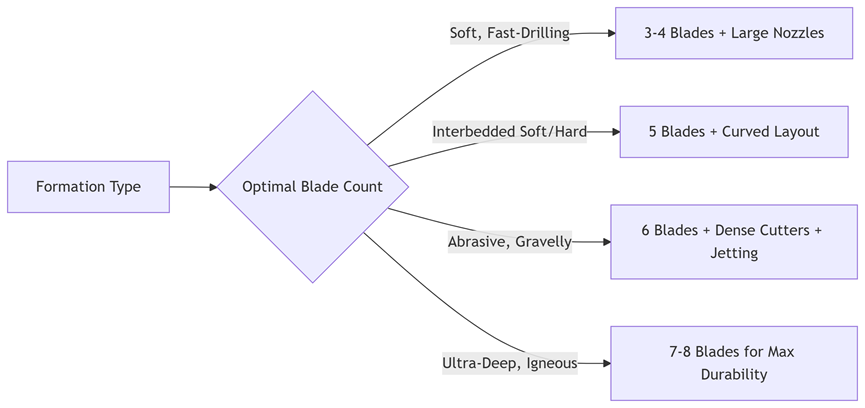
"In Xinjiang's Mahu conglomerate," reveals a SUNGOOD TECH engineer, "we added 2 micro support blades to a 5-blade core. Result: 18% faster ROP and 15% longer life than a standard 7-blade bit."
💬 Drilling Optimization Challenge
#DrillingHardRock Debate: Facing a "nightmare profile" of alternating flint and salt layers? What's your strategy?
① Stability First: Standard 7-Blade Bit
② Speed Focused: Aggressive 4-Blade Bit
③ Hybrid Solution: SUNGOOD TECH Dual-Track System
→ Explore real-world success stories and technical deep dives: See SUNGOOD TECH Case Studies & Data
PDC blade count is the silent dictator of drilling efficiency.
There's no universal "best" number – only the optimal configuration ruthlessly matched to the rock's secrets. As adaptive bits emerge, dynamically tuning cutter engagement, the battle waged by these blades is just piercing deeper into the earth's uncharted frontier...
Related News
Contact Us







